Have you ever tried sending messages for every new form submission?
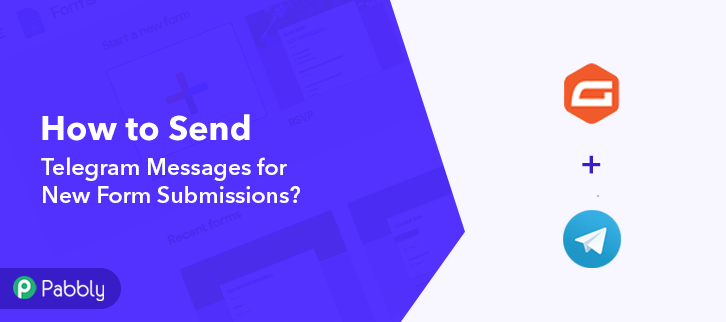
Maybe you have but what if I tell you, you can automate this task without coding. Yes! In this article, I’m going to walk you through the step by step procedure to integrate Gravity Forms and Telegram using Pabbly Connect.
Pabbly Connect is an automation and integration tool that helps you connect unlimited premium applications to automate manual & routine tasks in real-time.
Most importantly, you only have to follow this procedure once after that the created workflow will automatically send messages on form submissions.
Why Choose This Method Of Integration?
In contrast with other integration services-
- Pabbly Connect does not charge you for its in-built apps like filters, Iterator, Router, Data transformer and more
- Create “Unlimited Workflows” and smoothly define multiple tasks for each action
- As compared to other services which offer 750 tasks at $24.99, Pabbly Connect offers 50000 tasks in the starter plan of $29 itself
- Unlike Zapier, there’s no restriction on features. Get access to advanced features even in the basic plan
- Try before you buy! Before spending your money, you can actually signup & try out the working of Pabbly Connect for FREE
Before heading straight to the procedure, let’s first discuss Gravity forms and Telegram. Gravity Forms is an online form builder software. Whereas, Telegram is a freeware messaging application.
By integrating Gravity Forms with Telegram we are going to automatically send messages for every new form submission. This way, whenever a form is submitted on the connected Gravity Form, a message will be sent automatically on the Telegram group.
Also, you can check out the video tutorial given below for this automation.
Additionally, click on the image given below and copy the workflow template for this integration this will help you get started more quickly. Moreover, you can also visit the Pabbly Connect Marketplace to explore more such integrations & apps.
Now, without further ado let’s discover the Gravity Forms and Telegram integration.
Step 1: Sign up to Pabbly Connect
Begin the procedure to auto send Telegram messages for new form submission by visiting the Pabbly Connect website. Next, click on the ‘Sign-Up Free‘ button available here. Further, either directly sign-in using an existing Google account or register manually by filling the sign-up form.
Step 2: Access Pabbly Connect
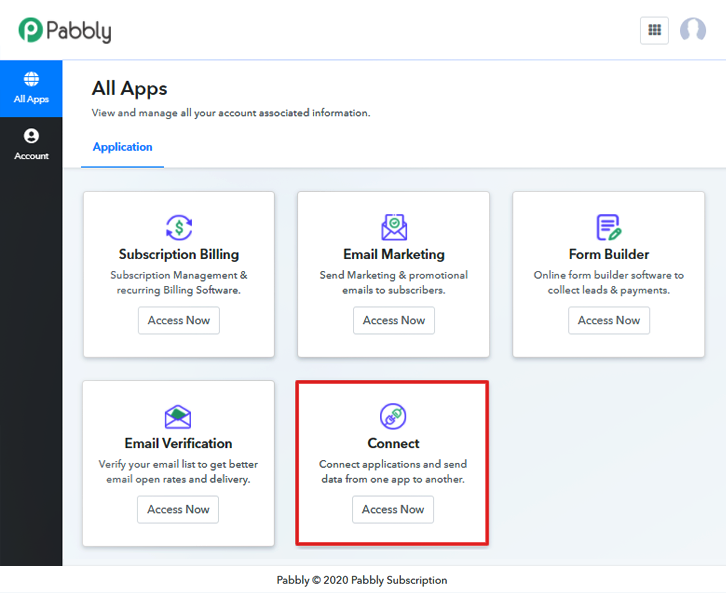
Subsequent to successfully logging in, click on the ‘Access Now’ button of the service ‘Connect’ amidst all the other Pabbly applications.
Step 3: Workflow for Gravity Forms and Telegram Integration
(a) Start with a New Workflow
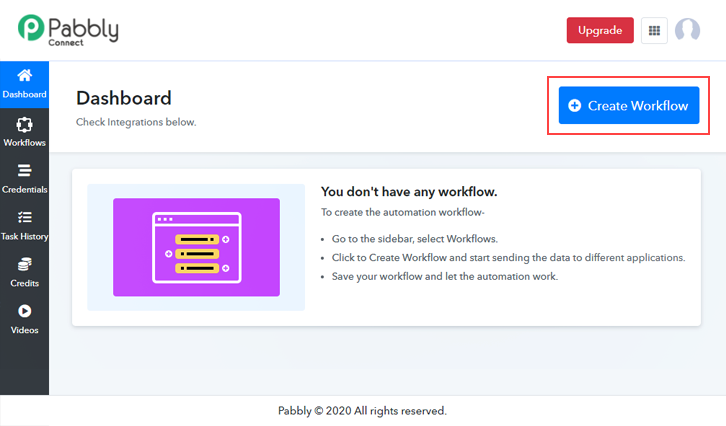
Then, start with creating a workflow for Gravity Forms to Telegram integration & for this click on the ‘Create Workflow’ button available on your Pabbly Connect dashboard.
(b) Name the Workflow
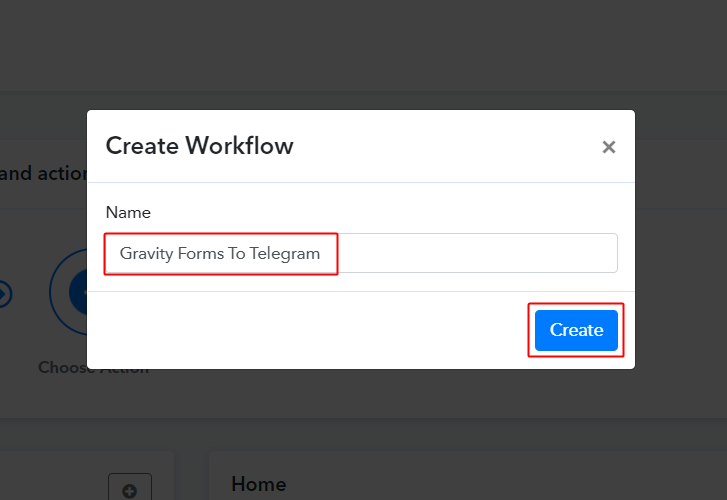
Enter a workflow name based on your integration or use-case (for instance: Gravity Forms to Telegram etc). After that, click on the ‘Create’ button.
Step 4: Setting Trigger for Gravity Forms to Telegram Integration
At first, we’ll set up a trigger condition on the new Gravity Form entries using Pabbly Connect.
(a) Select Application you want to integrate
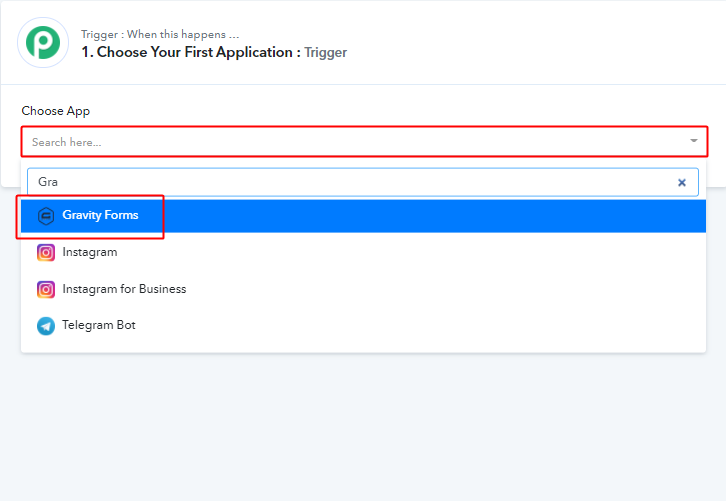
After naming your workflow, select the trigger condition app as ‘Gravity Forms’ from the ‘Choose App’ drop-down choices.
(b) Select Event & Copy Webhook URL
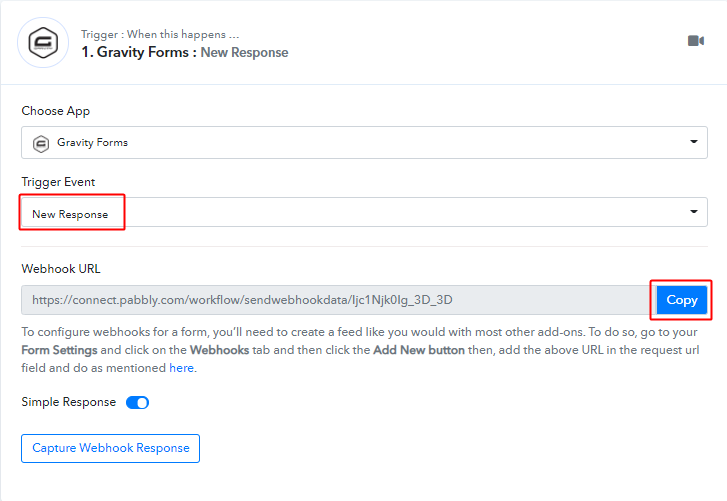
Next, select the trigger event option as ‘New Response’ & also copy the webhook URL given.
Step 5: Connecting Gravity Forms to Pabbly Connect
To connect and gather the form data, we need to set-up webhook on your WordPress plugin settings. For this first, log into your WordPress website where you already have the Gravity Forms plugin installed.
(a) Go to the WordPress Plugins
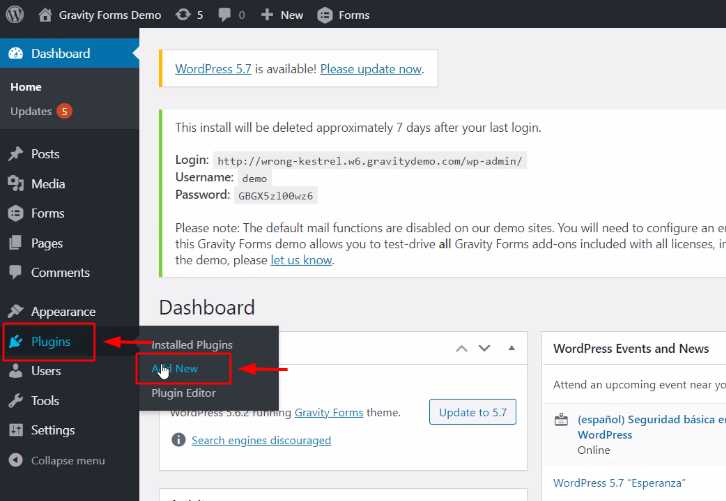
On your WordPress dashboard, click on the ‘Plugins’ option from the left vertical menu. Then, click on ‘Add New’ from the secondary menu that opens next. And install the ‘Gravity Forms Webhook Add-on’.
If you already have the plugin installed, skip the installation step.
(b) Make Sure You Have Gravity Forms Plugin Installed
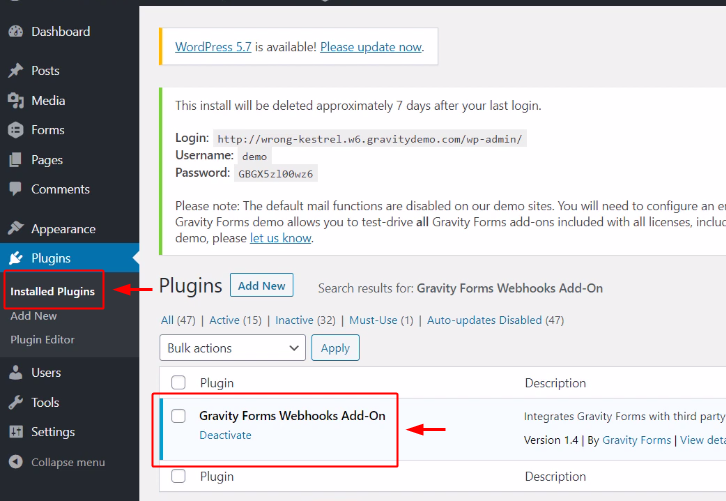
Now, after successfully installing the plugin, go to the installed plugin section.
(c) Go to PHP Workshop
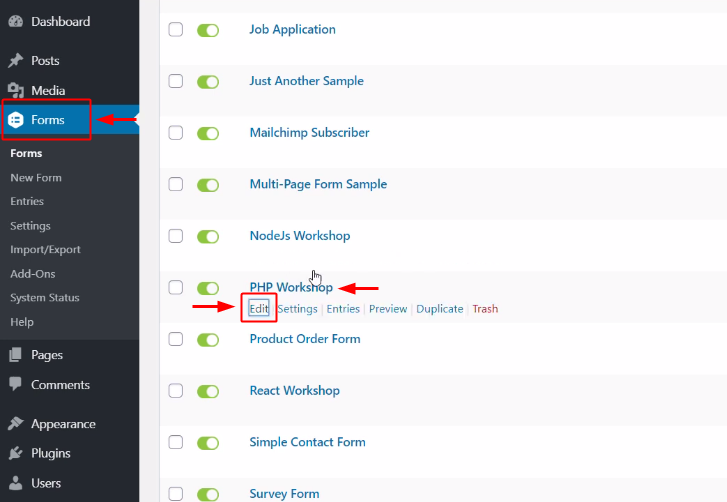
Next, click on the ‘Forms’ option available in the left verticle menu. A page will open up containing all form, click on the ‘Edit’ link of the form that you want to connect.
(d) Add New Webhook
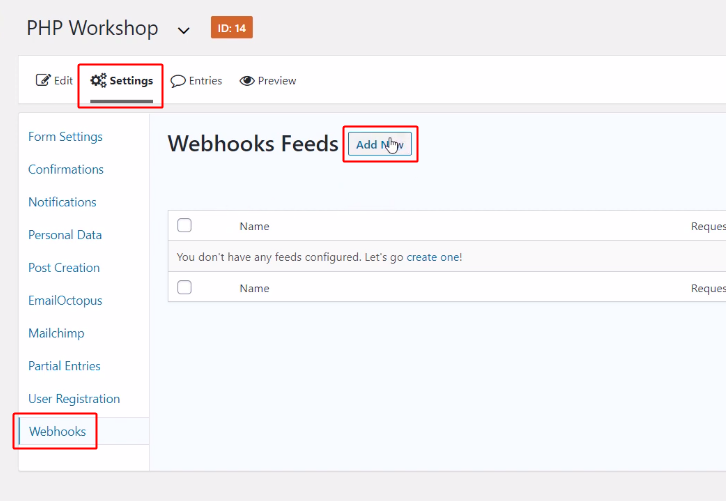
Now, go to the Form Settings by clicking on the ‘Settings’ tab from the menu.
On this section, click on the ‘Webhooks’ option available in the left-verticle menu.
Then, click on the ‘Add New’ button.
(e) Paste Webhook URL
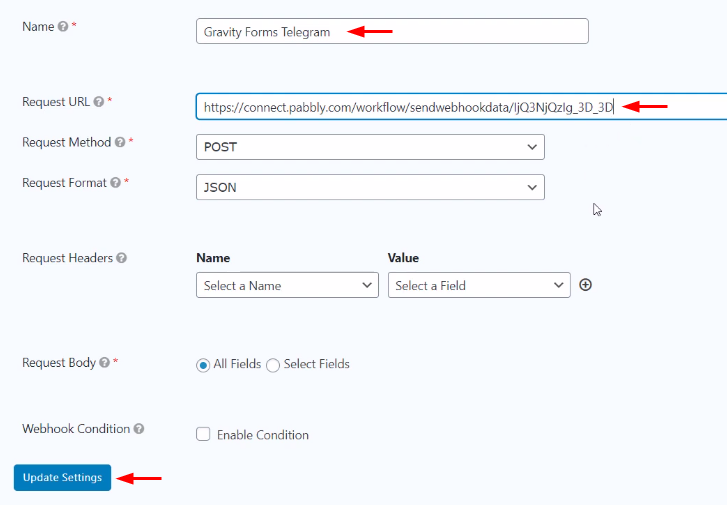
Name the Webhook and then paste the copied webhook URL into the ‘Request URL’ field.
Lastly, click on the ‘Update Settings’ button.
Step 6: Test the Response in Pabbly Connect Dashboard
As we can see, we are done setting up the trigger for Gravity Forms and Telegram integration. So, let’s test the Gravity Forms trigger by submitting a test form.
(a) Capture Webhook Response
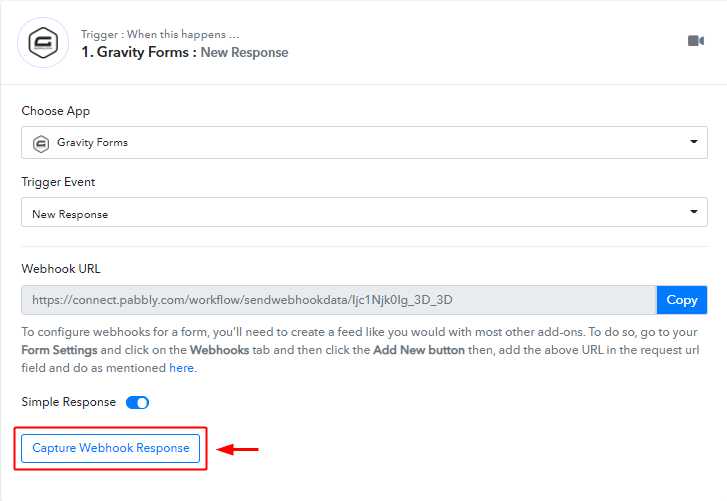
First, click the ‘Capture Webhook Response’ button available in the trigger window.
(b) Go to the Connected Form & Make a Test Purchase
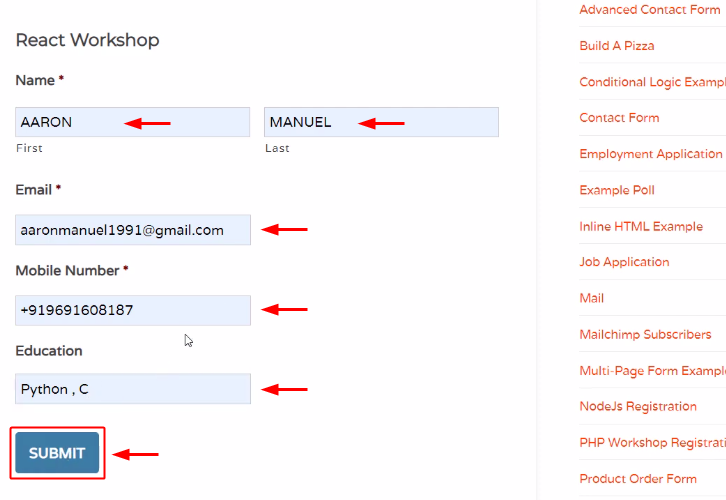
Next, go to the recently connected Gravity Form & fill in all the required form details. Lastly, ‘Submit’ the test form.
(c) Check & Save the Trigger API Response
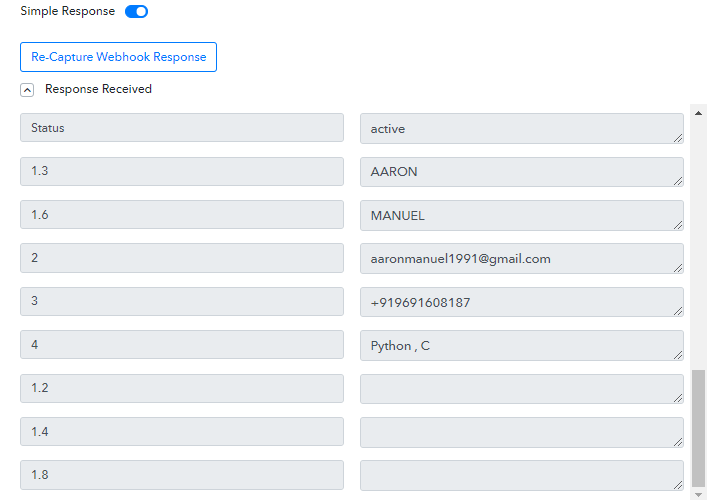
Check the form data in the Gravity Forms trigger response & save it.
Step 7: Setting Action for Gravity Forms to Telegram Integration
We have the test data from the trigger response, we will use this data in the action settings for further automation.
(a) Select Application you want to Integrate
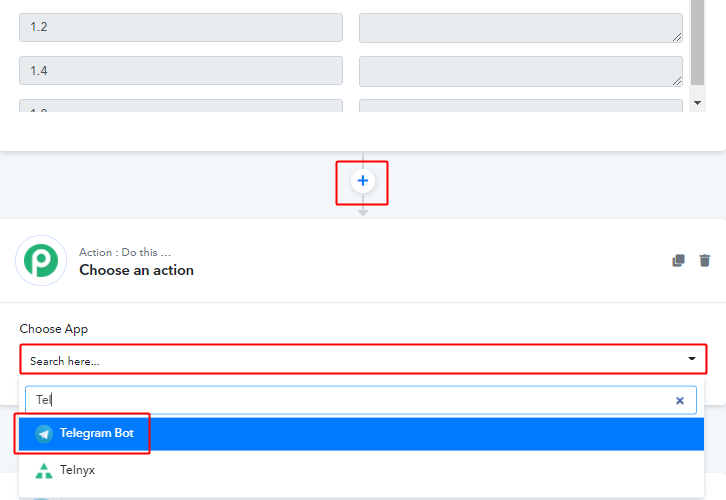
Click on the plus button that is next to your Gravity Forms trigger window.
Select the Choose App field value as ‘Telegram Bot’.
(b) Select Event & Connect with Telegram
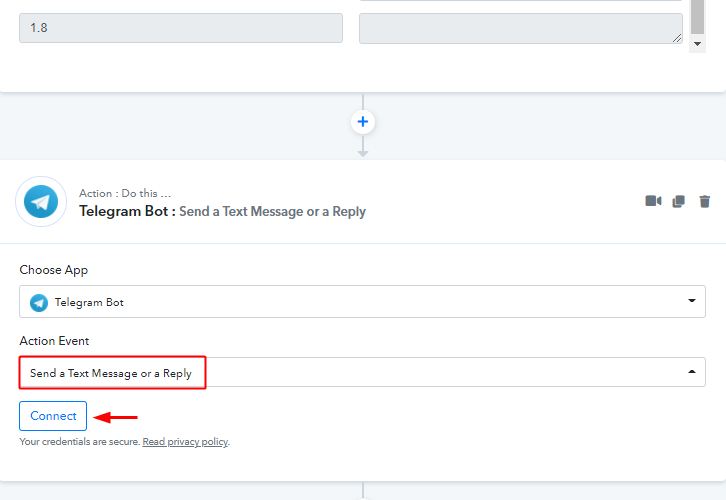
Next, select the action event as ‘Send a Text Message or a Reply’ and click ‘Connect’.
Step 8: Connecting Telegram to Pabbly Connect
Our next step is to connect the Telegram account with Pabbly Connect. For this first, log in to your Telegram account.
(a) Click on the BotFather Link
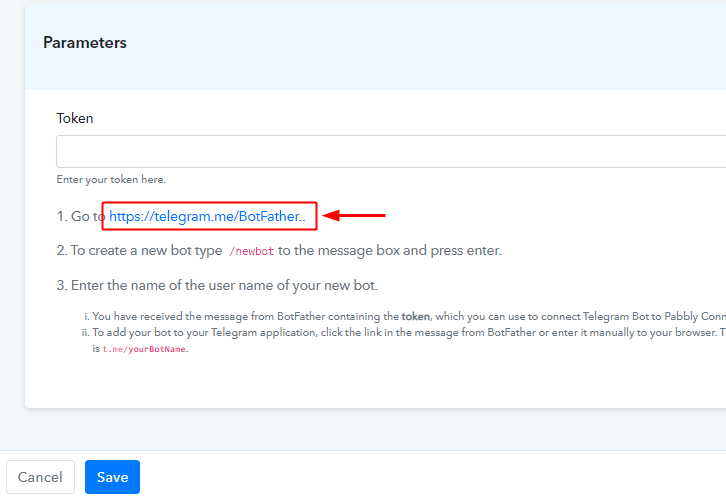
In the connection window that slides in from the right. Either click on the BotFather link available in the help text or access the ‘BotFather’ chat window by typing ‘BotFather in the Telegram app’s search.
(b) Click Start on BotFather Chat
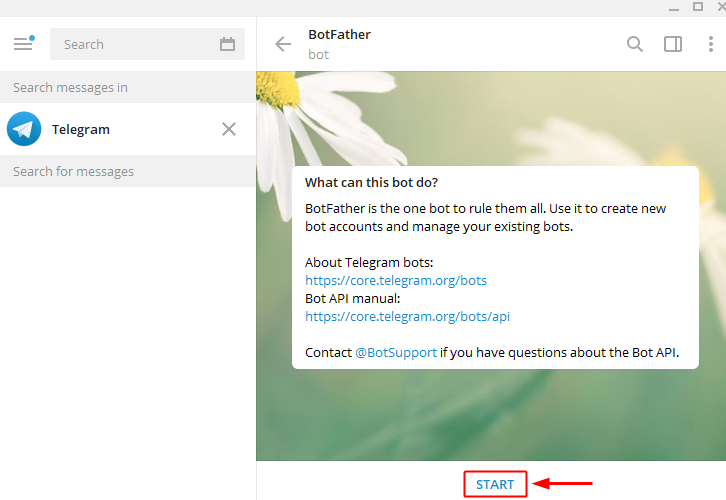
Next, in the BotFather chat window, click on ‘START’.
(c) Create a New Bot
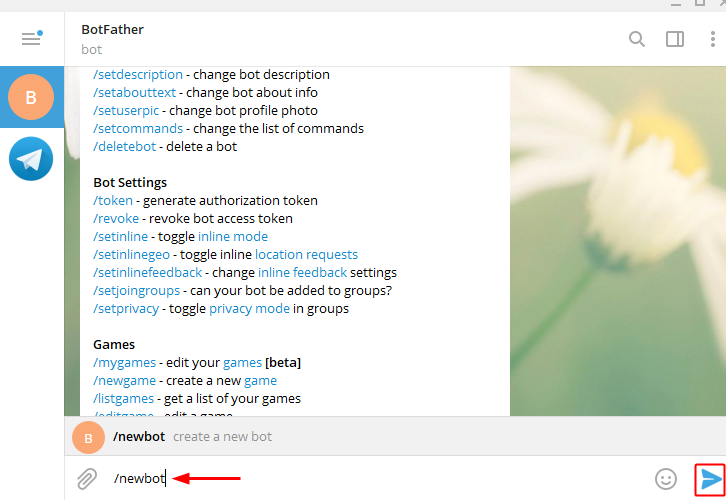
Now, create a new bot by typing the command ‘/newbot’ & then hit Enter or Send button.
(d) Name Your Created Bot
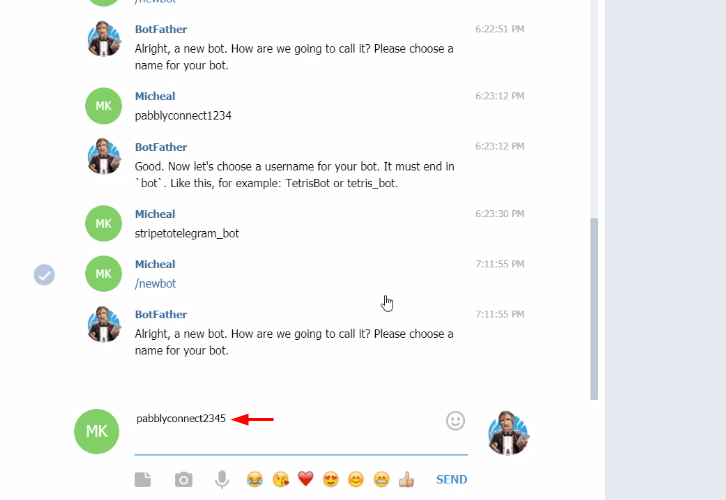
Next, the system asks for a bot name. Type a bot name that you want to assign to the recently created bot & then click on send.
(e) Enter a Bot Username
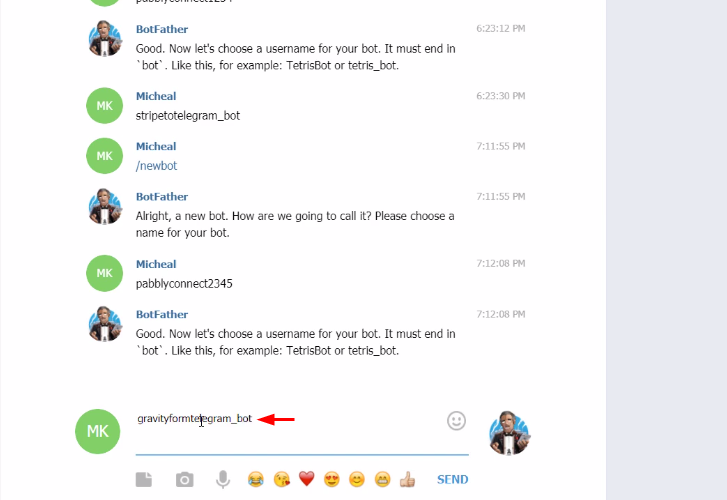
Lastly, feed a username for the created bot that must end with the suffix ‘bot’.
(f) Copy the Token
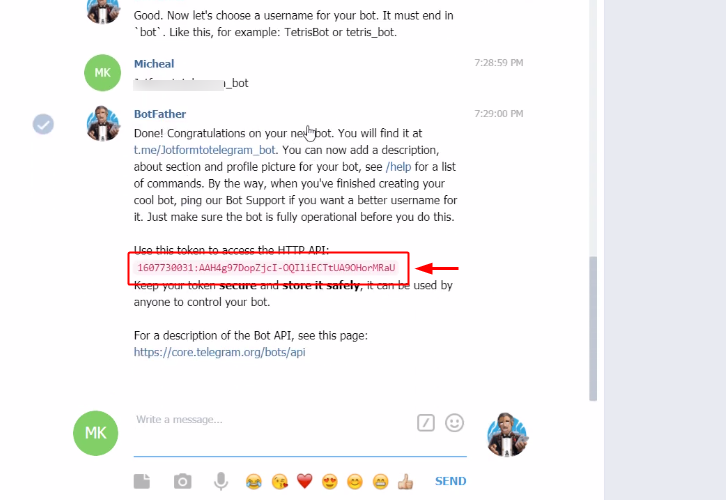
You’ll see a token generated for the recently created bot, simply select and copy it.
(g) Paste the Token
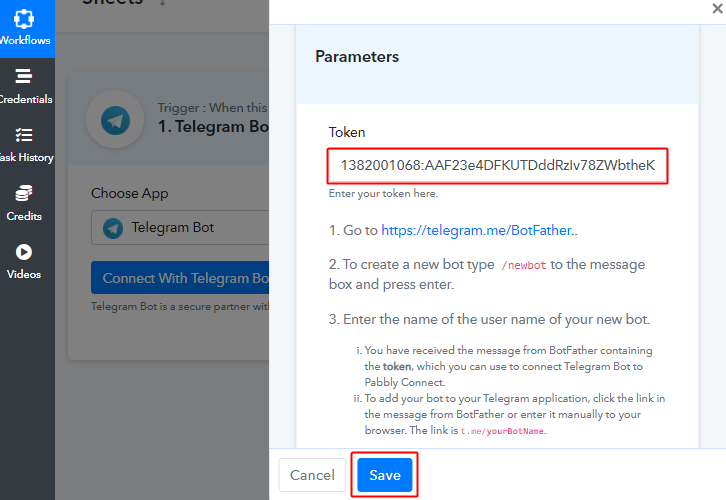
Paste the copied Telegram token in the connection window & click on ‘Save’.
(h) Create Telegram Group
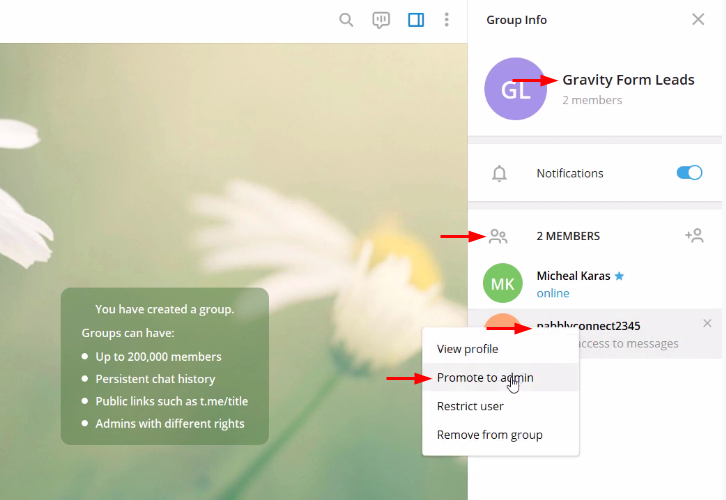
Now, create a group on your Telegram account, add members to it, remember to add the created bot in the group and also promote the bot as the admin of the group.
(I) Copy Chat ID
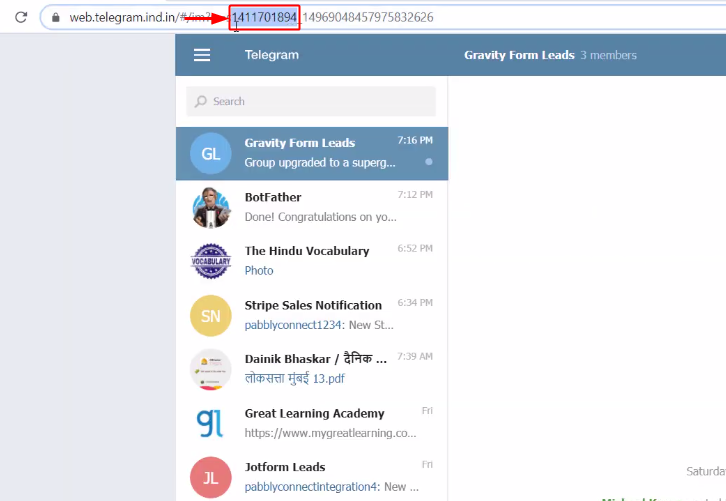
When you open your account on a browser window. You’ll get the Chat Id in the group’s URL. The digit sequence between ‘=<some_letter>’ and underscore is your chat ID, copy this digit sequence.
You can also refer to the help text below about the Chat ID field in the connection window.
(j) Paste Chat ID & Create Message
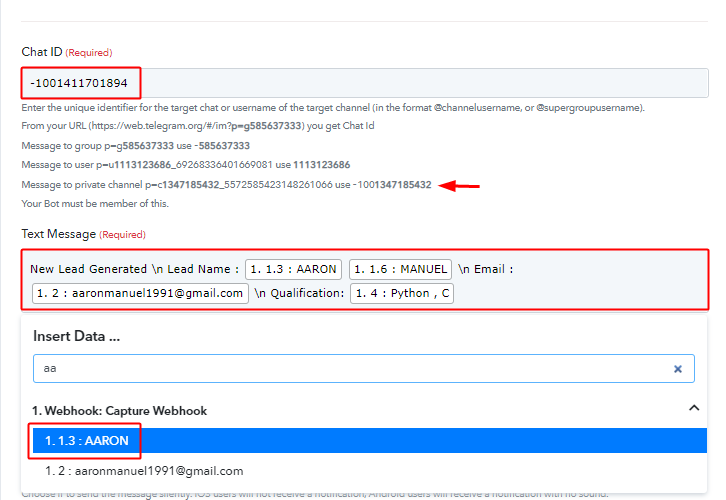
Now, paste the copied Telegram group Chat ID in the Chat ID field with the prefix ‘-100’ for a private channel message.
Also, draft a message to send to your team by combining the trigger response values with some plain text. To use the simply place our cursor in the Text Message field, a drop-down containing all the trigger response values will open up. Simply find and select the response that you want to use.
(k) Send Test Request
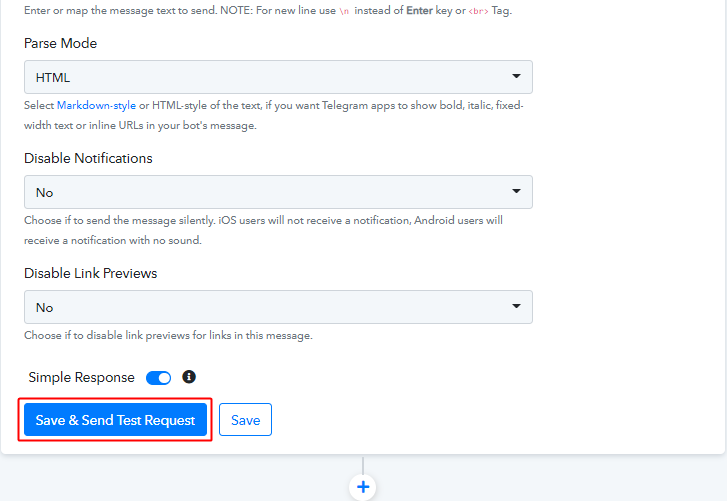
Now, click on ‘Save & Send Test Request’.
(l) Check & Save the Action Response
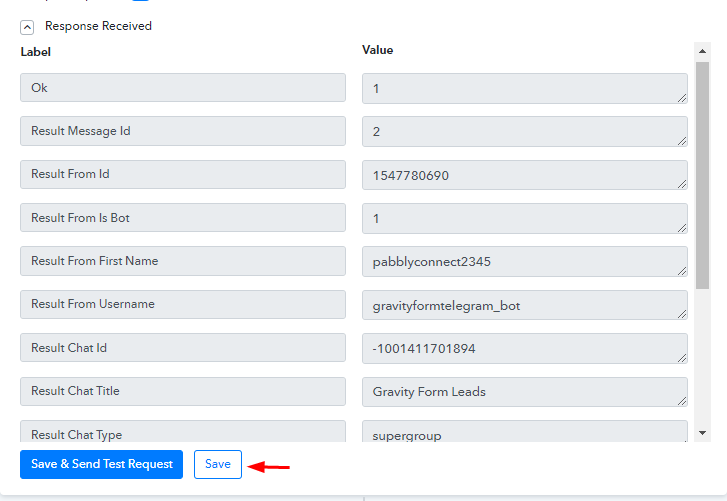
Certainly, you can check & save the Telegram action response from the Action response window.
Step 9: Check Response in Telegram
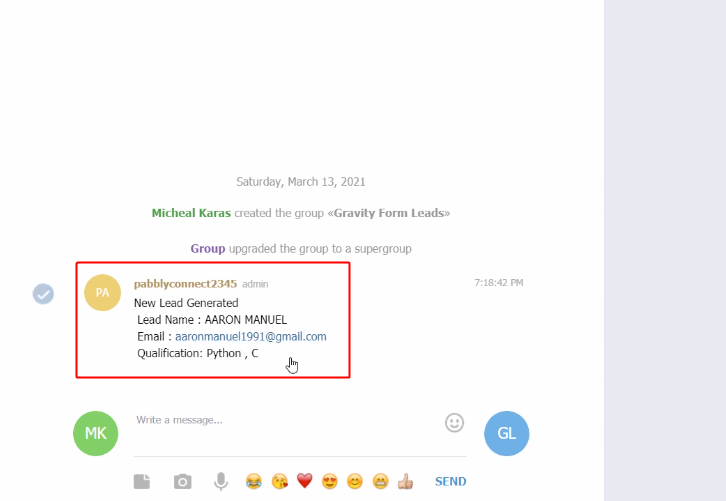
Lastly, check the message on the connected Telegram group. You can also make multiple test form entries and check the automation response yourself.
Conclusion –
To sum up, this was all about ‘How to send telegram messages for new form submissions’. Consequently, after completing the step by step procedure, you will end up sending Telegram messages automatically for every new Gravity Forms submissions.
Now, create your own account on Pabbly Connect for FREE with all its premium features and automate your routine tasks.
Do share your feedback on this integration in the comment section below.







